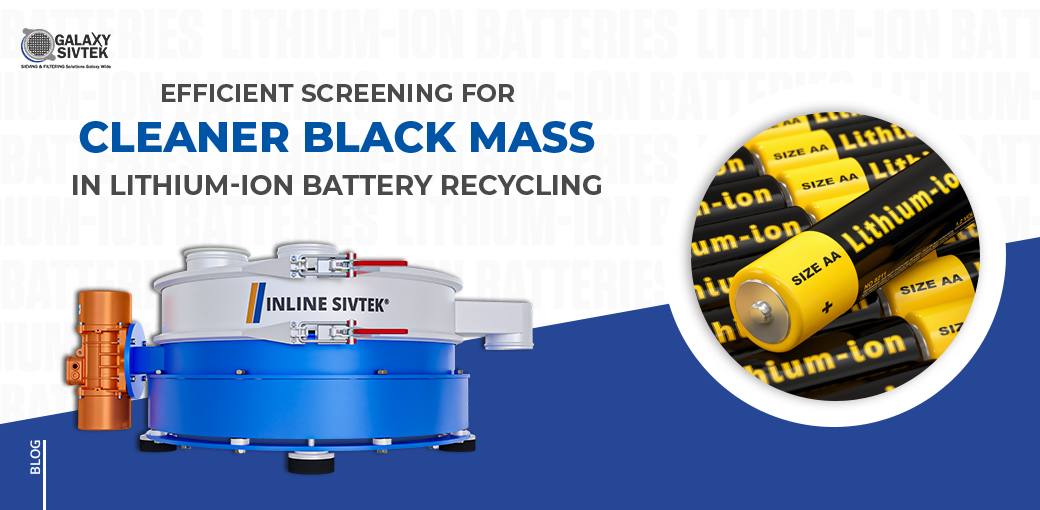
Committed To Quality, Committed To You
Recycling lithium-ion batteries is vital for resource conservation and involves complex steps to ensure the purity of recovered materials. Among these, black mass is one of the important materials that must be purified for reuse. This process involves collecting black mass from various stages and then performing check screening to remove any oversized materials. Read on for a detailed explanation of the entire black mass collection and check screening process.
The journey begins with crushing lithium-ion batteries, which come in various forms such as cylindrical, pouch, or prismatic. Crushing these batteries results in a mixture containing: Paper, Foil, Plastic, Metal powder and Black mass.
The crushed material is then passed through an air flow separator. This stage helps to remove lighter materials such as Dust, Plastic, Paper, foil etc.
The heavier materials, including metal powder and black mass, are separated for further processing.
Next, the material moves to a linear vibrating screen for the first level of screening, which involves three different decks:
The materials are then subjected to a second crushing process. The re-crushed material is processed using a high vibration vibro separator. This super gyro separator effectively separates the metal powder (copper and aluminium) from the black mass.
At this stage, black mass is collected from three different sources and in three different sizes. These various sizes of black mass are brought together for the next crucial step: check screening.
The combined black mass is subjected to check screening using the Inline Sivtek Vibrating Screen. This step ensures the removal of any oversized material from the black mass, achieving the purest form of black mass. The check screening process involves:
The result of the check screening process is the purest form of black mass, free from any oversized contaminants. The separated oversize material can be crushed again and passed through the same process to extract any remaining black mass, ensuring maximum recovery and purity.
Check screening or safety screening of black mass is a vital step in the recycling process of lithium-ion batteries. By removing oversized materials and ensuring the purity of black mass, recycling companies can achieve higher efficiency and better-quality recovered materials.
Galaxy Sivtek’s advanced screening solutions, like the Inline Sivtek Vibrating Screen, provide the necessary technology for this crucial process, helping recycling companies optimize their operations and contribute to a sustainable future.
For more information on how Galaxy Sivtek can assist with your lithium-ion battery recycling needs, contact us today.
